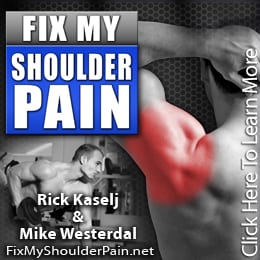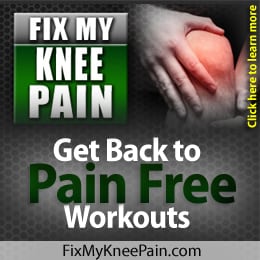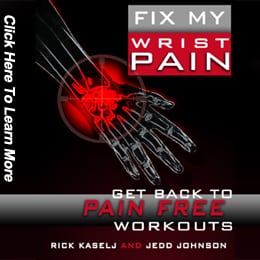What to Do at Work When You Have Lower Back Pain
When I worked in a large rehabilitation company, a common question that clients would ask me was what they could do about their lower back pain when they are at work.
Let me share with you what I would tell them.
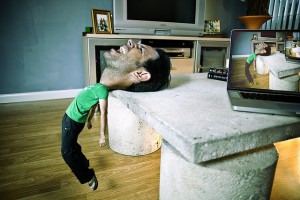 This is actually a continuation of a post that I did last week. Last week’s post was on Exercising with Lower Back Pain .
This is actually a continuation of a post that I did last week. Last week’s post was on Exercising with Lower Back Pain .
What I do for work is pretty light. It involves training clients in the gym, computer work, and driving to see clients. Last week when lower back pain hit, there were a few things that I did to help make it easier to work and recover from the lower back pain.
#1 – Sitting Up Tall
It is nice to roll your hips back and bend your lower back forward to move or stretch it, but being in this position for a long time makes my lower back pain worse.
I work on rolling my hips forward and sitting tall. This is the position that puts the least amount of stress and strain on my back. Just like I wrote last week, it puts the back into compression, which is a position that most backs can handle.
I know you will say, “How can anyone sit nice and tall?”
I look at my 2 year old son and when he sits at the dinner table, he has the best sitting posture of us all. So I know if he can do it, we can learn how to do it again. Our lower back pain is a great motivator on learning it how to do it fast.
Now one exercise I would do at my desk was this one:
One modification I made for my back was not to relax so much through my shoulders and lower back. I would not let my shoulder roll forward or flex my back as much.
Give it a try.
#2 – No Purses or Backpacks
Putting on a purse pulls your back to one side and increases the stress on your back. When you are experiencing lower back pain, this is not a good thing – so it is best to forget about the purse, or instead of carrying it on your shoulder, carrying it at your side like you are carrying groceries.
A backpack is not much better. Having it on your back pulls your back into greater extension, which leads to greater stress on the lower back. What I did with my backpack is move things into two bags and carry a bag of equal weight in each arm like a bag of groceries. This balanced out the pulling to one side and led to more compression (downward force), which my back can handle.
#3 – Light Stretching in Standing
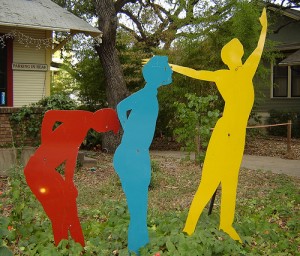 I would not sit down for a long period of time. I would try to get up and stand. When I was standing, I would avoid standing still. I would do small stretching movements for my hips and stretching movements for my lower back.
I would not sit down for a long period of time. I would try to get up and stand. When I was standing, I would avoid standing still. I would do small stretching movements for my hips and stretching movements for my lower back.
I would stand and rock my hips side-to-side, forward-backwards, and rotate them. I was working on lightly stretching the muscles around the hips in all three planes of movement. If the hip muscles are tight – which they are after you flare your back up – they will pull down on the lower back and lead to greater stress and pain.
The light rocking relaxes the muscles, stretches the muscles, and shows your brain that this movement is safe to do.
After my hip rocking, I would move into arching my back backwards. I would put my hands on the back of my hips and arch my back from my tail bone all the way to the back of my neck. I would do this for 3 to 10 repetitions. This ends up stretching the back backwards.
You can do the hip rocking and the back arching any time. While you are at work, on the phone, or during a meeting. If they look at you funny during the meeting, let them know, “I have been in a lot of meetings lately and my back is store. Doesn’t your back feel tight from all the sitting we do at meetings?”
I am sure you will get a “Yes” from them.
#4 – Blow Out the Tension
 One thing we did at the rehabilitation centre was biofeedback.
One thing we did at the rehabilitation centre was biofeedback.
The psychologist would work with a patient. They would have a very basic, safe, and small biofeedback machine that would connect to a person’s lower back. The machine would read how much muscle contraction there was in the person’s back. The psychologist would work with the patient on different things that they could do to lower the needle and decrease the tension in their lower back. One of the key things the psychologist did was breathing.
I did the same thing with my back, without the biofeedback machine. I would sit at my desk or stand. I would take a deep breath through my nose and let my stomach expand. Then I would breath out my mouth and visualize all the tension and pain of my back leaving my body with my exhaling breath.
I know it sounds a little weird but after 3 breaths, I would feel my lower back muscles relax.
Lower Back Pain Wrap Up
Let’s wrap up here.
If you have to sit, sit tall. Your back with thank you! If you need to carry stuff to work, try to carry it in your hands rather than your shoulder. When you are standing, don’t stand still; try to lightly stretch your hips and lower back. Lastly, take a few big breaths and blow out all the pain and tension that is going on in your lower back.
I hope this has helped you out.
If you have a tip or a trick that you use to help your body overcome lower back pain, I would love to hear it.
I think that is it for today.
Thank you for reading and if you think of someone that might benefit from this article, feel free to forward it onto them.
Rick Kaselj, MS
